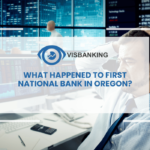Estimated reading time: 4 minutes
Table of contents
Revolutionize Banking with BIAS: A Path to Future Success
In today’s rapidly evolving banking landscape, financial institutions are constantly seeking innovative solutions to stay competitive, improve customer experiences, and streamline operations. One such groundbreaking technology that holds immense potential for the banking industry is BIAS, or Bias Information Automation System. In this blog post, we will delve into the world of BIAS and explore how it can lead your bank into a prosperous future.
What is BIAS Technology?
BIAS, short for Bias Information Automation System, represents a transformative leap in banking technology. This cutting-edge system harnesses the power of artificial intelligence (AI) and data analytics to make data-driven decisions, automate routine tasks, and enhance customer interactions. Essentially, BIAS acts as a virtual brain for your bank, continuously learning and adapting to market dynamics, customer preferences, and regulatory changes.
The Four Pillars of BIAS Transformation
To understand how BIAS can lead your bank into the future, let’s break down its core pillars of transformation:
- Data Analytics and Insights: BIAS technology is built on a foundation of robust data analytics. It can process vast amounts of financial data in real-time, providing your bank with valuable insights into customer behavior, market trends, and risk assessment. With these insights, you can make informed decisions that drive profitability and reduce risks.
- Automation and Efficiency: One of the most significant advantages of BIAS is its ability to automate repetitive tasks and processes. From loan approvals to fraud detection, BIAS can handle routine operations, allowing your employees to focus on more strategic and customer-centric activities. This not only improves operational efficiency but also reduces human errors.
- Personalized Customer Experiences: In the era of digital banking, customers demand personalized experiences. BIAS excels in this aspect by analyzing customer data and tailoring services to individual preferences. It can recommend suitable financial products, offer proactive support, and even predict when a customer might need a particular service. This level of personalization fosters stronger customer relationships and boosts loyalty.
- Risk Management and Compliance: Staying compliant with evolving regulations is a constant challenge for banks. BIAS incorporates compliance monitoring and risk assessment into its core functionality. It can flag potential compliance issues and assess risks in real-time, allowing your bank to proactively address them and avoid costly penalties.
BIAS in Action: Real-world Examples
To illustrate the power of BIAS, let’s explore a few real-world examples of how banks have leveraged this technology to transform their operations:
- Enhanced Credit Scoring: Using BIAS, a leading bank improved its credit scoring process by analyzing a wider range of data points, including social media activity and online behavior. This resulted in more accurate credit assessments, reduced default rates, and increased lending opportunities.
- Chatbot Customer Service: Another bank integrated BIAS into its customer service chatbots, enabling them to provide personalized assistance. These chatbots can answer inquiries, offer financial advice, and even assist with account management tasks, enhancing the overall customer experience.
- Fraud Detection: BIAS technology has been instrumental in fraud detection. Banks can now quickly identify suspicious transactions and take immediate action to prevent fraud, safeguarding both their assets and customer trust.
- Regulatory Compliance: Staying compliant with constantly evolving regulations is a priority for banks. BIAS automates the monitoring of regulatory changes and updates, ensuring that the bank always remains within legal boundaries.
Implementing BIAS in Your Bank
While the benefits of BIAS are clear, implementing this technology in your bank requires careful planning and execution. Here are some key steps to consider:
- Assessment and Strategy: Begin by assessing your bank’s current technology infrastructure and identifying areas where BIAS can make the most impact. Develop a clear strategy for its implementation.
- Data Integration: Ensure that your bank’s data is well-organized and easily accessible. BIAS relies heavily on data, so data integration is crucial for its success.
- Training and Upskilling: Provide training to your employees to help them adapt to the new technology. Upskilling your workforce is essential for a smooth transition.
- Testing and Monitoring: Continuously monitor the performance of BIAS and conduct thorough testing to identify and resolve any issues promptly.
- Customer Engagement: Communicate with your customers about the benefits of BIAS and how it will improve their banking experience. Transparency is key to building trust.
The Future of Banking with BIAS
As we look ahead, it’s evident that BIAS technology is set to revolutionize the banking industry. Banks that embrace this technology will have a competitive edge, offering superior customer experiences, efficient operations, and reduced risks.
BIAS is not just a tool; it’s a catalyst for change, leading your bank into a future where data-driven decisions, automation, and personalization are the norm. So, are you ready to lead your bank into the future with BIAS?
In conclusion, BIAS technology holds immense potential for the banking industry. Its ability to harness data, automate processes, and deliver personalized experiences is a game-changer. By embracing BIAS, your bank can position itself at the forefront of the financial industry, ready to navigate the challenges and opportunities of the future with confidence and success. Don’t wait; start your BIAS journey today and secure a prosperous future for your bank.






